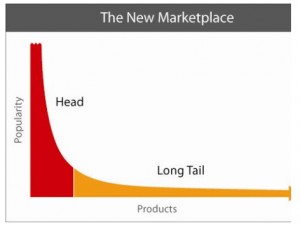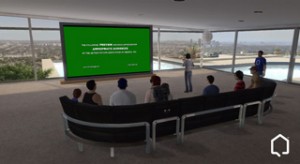SCEA Home’s Top Twenty Items (By Number of Units Sold) For July 8-15, 2013
Information courtesy of Paul Sullivan, SCEA Digital Platforms; commentary by Terra_Cide, HSM Editor-in-Chief
At HomeStation, we scrutinize our visitor numbers and behavior patterns religiously. After nearly three years, we know exactly what kind of content performs best on what day of the week, what the ideal hour is for publishing new content to the site, and so forth. Considering that our founder and publisher is a business analyst for Sony Pictures Entertainment — one of three members of HSM’s editorial staff who are now employed by Home developers — this attention to detail is hardly surprising. Nor is it, I suspect, a surprise if we reveal that we got a lot of traffic — a lot — from our behavioral economics analysis articles highlighting consumer trends in Sony’s top ten sales lists.
It was thus certainly a loss when those sales lists were discontinued. Each successful Home media site has something unique to offer, and one of the cornerstones of HSM’s success has been its ability to correctly assess consumer patterns in Home and offer guidance on behavioral economic trends accordingly. As a Sony-positive, developer-positive, Home-positive publication, one of our goals is to help developers maximize their ROIC in Home, thus encouraging them to stick around and produce even more virtual goods for the consumer base.
 So you can imagine, then, our elation at not only seeing that data feed resuscitated, but in fact enhanced.
So you can imagine, then, our elation at not only seeing that data feed resuscitated, but in fact enhanced.
The old SCEA sales lists were a monthly compilation, and they only revealed the top ten virtual goods sold within SCEA Home for that period of time. The problem with this is that while it gave a decent snapshot of what was going on, it ignored one very critical fact: Home content releases have what can only be termed as an “Eiffel Tower” sales curve. What happens on the week of that content’s release is critical, because even though Home content has a long tail when it comes to monetization, the opening fortnight is really where a lot of the money has to be made back.
And now, thanks to Paul Sullivan at SCEA Digital Platforms, we now have a data set measured in weekly increments, rather than monthly. And, even better, it shows the top twenty items (by number of units sold) for the week, rather than just the top ten.
That Sullivan guy. He’s pretty awesome, isn’t he?
So, without further ado, here’s the list for 7/8 through 7/15:
- #1: Lockwood Publishing — Belly Dancing animation pack (female)
- #2: Lockwood Publishing — Haven of the Skies treasure pack
- #3: Konami Digital Entertainment, Inc. — Club Luminosity
- #4: nDreams Ltd. — Masquerade Ball — the Ballroom
- #5: Konami Digital Entertainment, Inc. — Club Luminosity
- #6: VEEMEE LLP — Shoulder Slung Top, pink stripes
- #7: nDreams Ltd. — Masquerade Ball – Fine Dress (female) (Gothic)
- #8: VEEMEE LLP — Superstar Cropped Jacket – red
- #9: Konami Digital Entertainment, Inc. — Neon Turntables
- #10: Lockwood Publishing — The Haven of the Skies
- #11: Konami Digital Entertainment, Inc. — Neon Stool
- #12: Sony Pictures Entertainment (LOOT) — Hollywood Hills House Nighttime Estate (with Home Theater)
- #13: Lockwood Publishing — Kalila Clothing Pack (female)
- #14: nDreams Ltd. — Masquerade Ball Exquisite Dress (female) (Gothic)
- #15: Konami Digital Entertainment, Inc. — Neon Speaker
- #16: nDreams Ltd. — Masquerade Ball (complete bundle)
- #17: Konami Digital Entertainment, Inc. — Neon Wall Speaker
- #18: Konami Digital Entertainment, Inc. — Neon Booth Seat
- #19: Konami Digital Entertainment, Inc. — Neon Table
- #20: Konami Digital Entertainment, Inc. — Neon Tall Plant
You know the drill, and it’s great to be able to offer it again: let’s dive in and analyze the data!
 1. Konami probably won the week — and what we can learn from this.
1. Konami probably won the week — and what we can learn from this.
Nearly half of this list is taken up by Konami, and it’s all tied to the Club Luminosity release. While the critical reception to this deployment has been mixed at best, there were a whole lot of people who opened up their wallets to own something vaguely akin to Singstar reimagined by heavy doses of hallucinogenics. A couple of key takeaways from this: furniture sales can usually receive a healthy boost from being tied to a specific estate (and released concurrently with said estate), and while there may be some extra cost and paperwork involved in creating and releasing a clubhouse variation on a scene, it’s well worth the investment. Sure, it’s a different scene type with different functionality, but if you’ve already sunk the bulk of your cost into creating the estate version, the incremental cost for a clubhouse variation seems very justifiable. Note that nDreams recently re-released the Musicality scene as a clubhouse (which should have been done years ago), likely because the cost to do so was significantly less than developing a new scene from scratch. And speaking of nDreams…
2. nDreams capitalized on the oldest buying motive for any social MMO: relatable luxury.
If Konami’s new scene blatantly went after music and dancing in Home — one of the oldest social meta-games this virtual world has to offer — then nDreams did exactly the same thing, albeit in a very different way. Spend any length of time in Home, and you quickly observe that dance, music and playing dress-up are three of the biggest non-gaming user activities in Home. More than once over the years have users thrown various costume dance balls, and it was only a matter of time until an estate was created which blatantly capitalized on this. It’s also worth noting that Home users evidently still have a fascination with Gothic clothing, considering that Gothic-themed clothes have repeatedly shown up on SCEA’s sales lists over the years. And speaking of clothing.
3. “Females” resurgent?
Female clothing items had shown a downward trend in Home sales last year, to the point of completely vanishing from the sales lists. Whether there’s not yet enough data to know if this consumer trend has reversed itself long-term, female clothing was all the rage during this one week, chewing up numerous slots on the list for nDreams, VEEMEE and Lockwood. Indeed, the only locomotion on the list — if you can call it one — is Lockwood’s female belly dancing, And, tellingly, it’s at the top of the list. This leads me to only one conclusion: that there are a whole lot of guys in Home who are utterly desperate to see gyrating hips. And, judging from the sales of the Kalila clothing pack, clearly this is the same demographic that wore out the pause buttons on their remotes during the Leia slave metal bikini scenes from Return of the Jedi. Hey, kudos to Lockwood for selling what’s a surefire hit in Home. And speaking of Lockwood…
4. Haven of the Skies is a gutsy move.
Remember when Lockwood and Juggernaut came out with Arabian-themed estates at almost exactly the same time, causing everyone to arch an eyebrow? Looks like Lockwood decided to do what it does best: double-down on the formula by offering more of a good thing. While Juggernaut has moved in a completely different direction via Bramblenook Farm and Serenity Plaza, Lockwood’s strategy appears to be more along the lines of depth, rather than breadth. When Lockwood finds a concept that strikes a chord with the Home consumer base, their repeated pattern is to flesh out that standalone offering into something larger and interlinked; we’ve seen this with the Dream estates, and now we’re seeing it with this. And, frankly, I like that; Home still feels too much like a series of unrelated attractions bound by a common scripting code, while Lockwood has excelled at making a lot of its offerings feel like worlds within the world of Home. And, clearly, the financial reward is there. Oh, speaking of deepening an interlinked world…
 5. LOOT’s laughing all the way to the bank.
5. LOOT’s laughing all the way to the bank.
It’s common knowledge (particularly to anyone who’s followed these sales lists over the years) that LOOT’s original Hollywood Hills House daytime estate is one of the all-time bestselling estates in the history of Home. Combine the competitive edge of the EOD with the relatable luxury of an estate that looks like it belongs on Mulholland Drive, and you’ve got a license to print money. After years of waiting, LOOT finally decided to revisit one of their hits, this time by offering the scene in a nighttime variation, with swimming and a radio that plays music throughout the entire estate. And for all those people who screamed on the Sony forum about the estate’s pricing, the reality is that the nighttime scene has clearly performed extremely well. Cap that off with the masterstroke of launching a sales event roughly a month after the initial release — just late enough to not cannibalize full-price sales, but still soon enough to pull in any residual buyers who were on the fence — and you’ve got a brilliantly executed project which deserves all the financial gains it continues to realize. Oh, lastly, speaking of financial gains…
6. Game consumables still monetize in Home, even if it’s easier and safer to monetize Home’s social scene.
Remember, these new lists we’re receiving from SCEA Digital Platforms are weekly — not monthly — compilations. This explains why you’re not seeing the usual stack of gaming consumables, such as Digital Leisure’s chips, atop the list, since a weekly sorting method lends itself to highlighting the short-term sales spikes rather than long-term performers. That said, if there’s one lesson everyone learned from Home 2012, it’s that Home games are a high-risk, high-expense proposition with a relatively low success rate. Although we feel very confident that Digital Leisure’s Western Village will perform extremely well in Home once it’s released, because it blends gaming and social elements, we encourage the 2013 trend we’re seeing of more blatant moves to monetize the social side of Home (such as VEEMEE’s Acorn Park). The costs and development time appear to be lower, with a greater chance of a good ROIC. Home is first and foremost a social MMO experience — not a gaming platform — and developers who can make money off of deepening the social experience stand the best chance of turning a consistent profit in Home these days.
Share
| Tweet |




 Twitter
Twitter
Just a note: 19 out of the 20 went on sale that week. So that proves the graph is correct. The takeaway helps to say what sells in Home out of a weekly dump. I agree that it is somewhat more useful than a monthly dump. The more information the better.
Just posting to say I enjoy the stat sales list. Must get that neon wall speaker which I forgot about.
That guy Sullivan can play on my basketball team any old time.